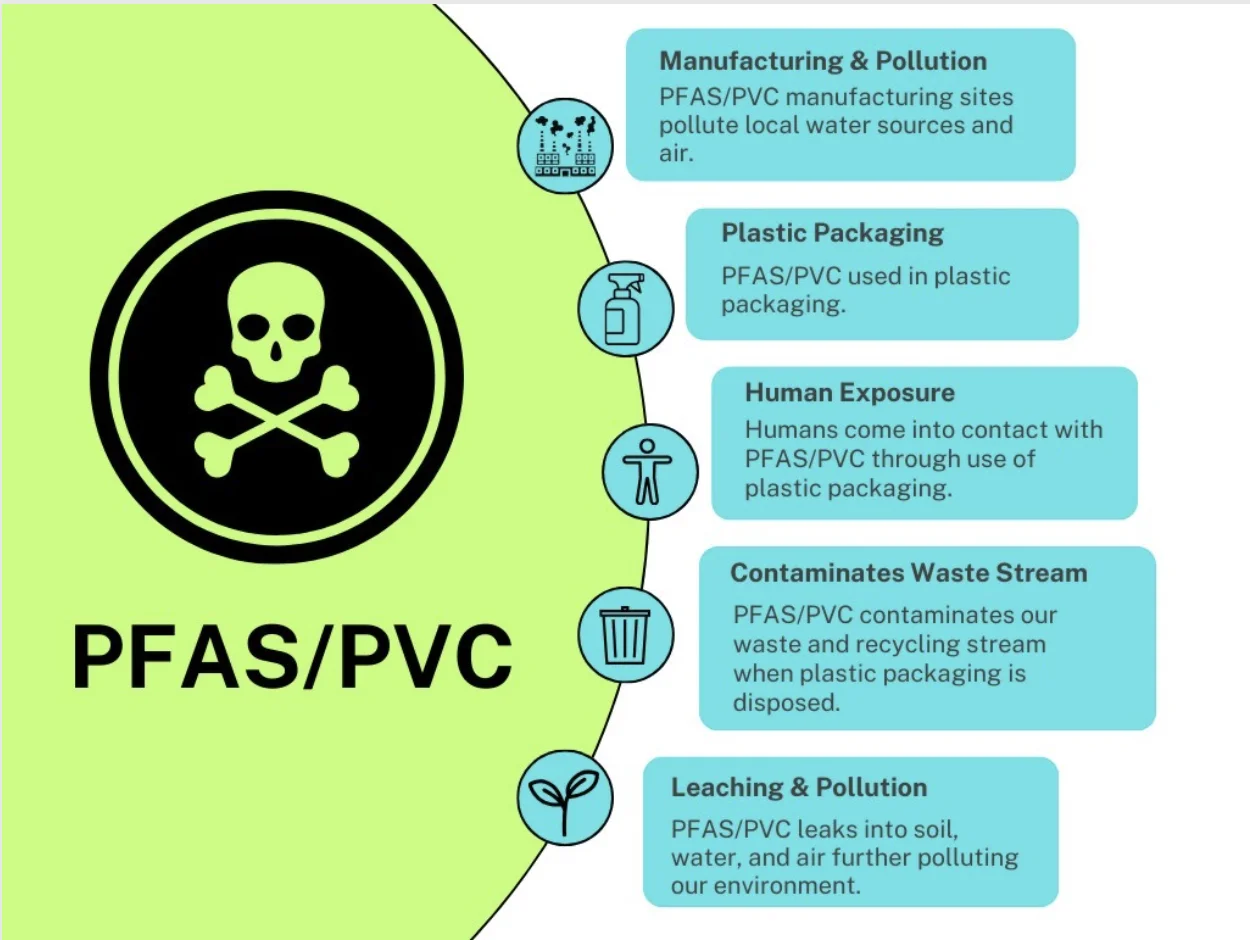Ending Forever Chemicals Act: California SB 903
At a Glance
The California Ending Forever Chemicals Act (SB 903) introduced by Senator Nancy Skinner (D- Berkeley) sought to ban the use of toxic PFAS ‘forever’ chemicals in consumer products in California by 2030 except where uses are proven essential. Although it did not pass, BCPP plans to work with our allies to reintroduce these or a similar bill in 2025, continuing the fight against these toxic forever PFAS chemicals.
PFAS ‘forever’ chemicals are a class of over 12,000 persistent hazardous chemicals linked to many serious health problems including breast and other cancers, birth defects, hormone disruption, kidney and liver damage, and thyroid disease.
PFAS are known as ‘forever chemicals’ because they don’t break down for centuries. They build up in our bodies and the environment, endangering us and future generations.
Status: SB903 was introduced in the Senate on January 4, 2024. It passed the Senate Environmental Quality Committee on April 3rd (4-2). It passed the Appropriations Committee on April 29th (5-0), but did not pass off the suspense file when evaluated for financial impact. BCPP plans to work to pass this important bill again in 2025.

Key facts about PFAS in our products:
- PFAS are widely used in a range of consumer products, leading to widespread contamination of food, water, soil, workplaces, and people’s bodies.
- Products containing PFAS pollute people and the planet during their production, use, and disposal.
- To date there is no federal or California state requirement for manufacturers to disclose to consumers that PFAS are in their products or services, and there is still no comprehensive source of information on the many individual substances and their functions in different applications.
- California has banned PFAS in a range of consumer products since 2020, but existing bans apply to only a fraction of the 200 use categories.
- A 2020 study found PFAS are used in almost all industry branches and many consumer products. The study identified more than 200 use categories and subcategories.[1] In addition to textiles, fire-fighting foam, and electroplating, it named many other categories including ammunition, optical devices (contact lenses), climbing ropes, guitar strings, coatings, paints and varnishes, music instruments, pesticides, and artificial turf.
- Disposal of products through recycling, incineration, and in landfills result in PFAS chemicals being released into the environment – seeping into groundwater and soil, contaminating drinking water, and entering the atmosphere. Contamination generated from these methods of disposal disproportionately impacts communities already burdened by environmental injustice and adds to the global burden of these forever chemicals.
- PFAS can build up in our bodies. Based on CDC biomonitoring work, it is estimated that over 98% of Americans have PFAS in their blood. PFAS can be transferred from mothers to their babies through the placenta before birth and through breast milk after birth.
- PFAS chemicals disrupt our immune systems, increasing our risk for COVID and reducing the health protective effect of vaccines. Studies show PFAS chemicals are linked to decreased antibody response to vaccines.
- A study in 2019 estimated the direct annual health care costs of the impacts of similar European exposure to PFAS as 52-84 billion Euros. A 2021 scientific opinion noted that the equivalent, annual direct health-related costs in the USA would be $37−59 billion annually.[2]
- California has banned the use of PFAS in various consumer products and other uses including textiles (clothing, outdoor gear, accessories, and home furnishing textiles, AB 1817 2023); in paper-based food packaging (AB 1200 2022); in personal care and beauty products (AB 2771 2022; AB 2762 2020); juvenile products (AB 652 2021); and fire-fighting foam (SB 1044 2020).
- A Maine law passed in 2021 (LD 1503) requires manufacturers to report products containing intentionally added PFAS, and the first reports (from about 2% of the companies) has already covered almost 1000 products.
- Maine (2021, LD 1503) and Minnesota (2023, H.F.2310) have passed similar laws requiring an essential use finding for any use of PFAS in products after a certain date. The CA bill has the most specific definition of “essential use” and would cover a much larger market.
- Safer alternatives for many consumer uses already exist, as demonstrated by the numerous companies that have stopped using PFAS.[3]
Related Resources
- SB 903 Author Fact Sheet
- Press Release: Bill Introduction
- Read the Bill & Legislative Info
Supporting Organizations
BCPP co-sponsors this bill along with our partners the California Association of Sanitation Agencies, Clean Water Action, Environmental Working Group and the Natural Resources Defense Council.
[1] Glüge, J.; Scheringer, M.; Cousins, I. T.; DeWitt, J. C.; Goldenman, G.; Herzke, D.; Lohmann, R.; Ng, C. A.; Trier, X.; Zhanyun, W. An overview of the uses of per-and polyfluoroalkyl substances (PFAS). Environ. Science: Process. Impacts 2020, 22, 2345−2373. DOI: 10.1039/d0em00291g https://pubmed.ncbi.nlm.nih.gov/33125022/
[2] Cordner et al, The True Cost of PFAS and the Benefits of Acting Now, Environ. Sci. Technol. 2021, 55, 9630−9633 https://pubs.acs.org/doi/10.1021/acs.est.1c03565
Types: Article, Fact Sheet




